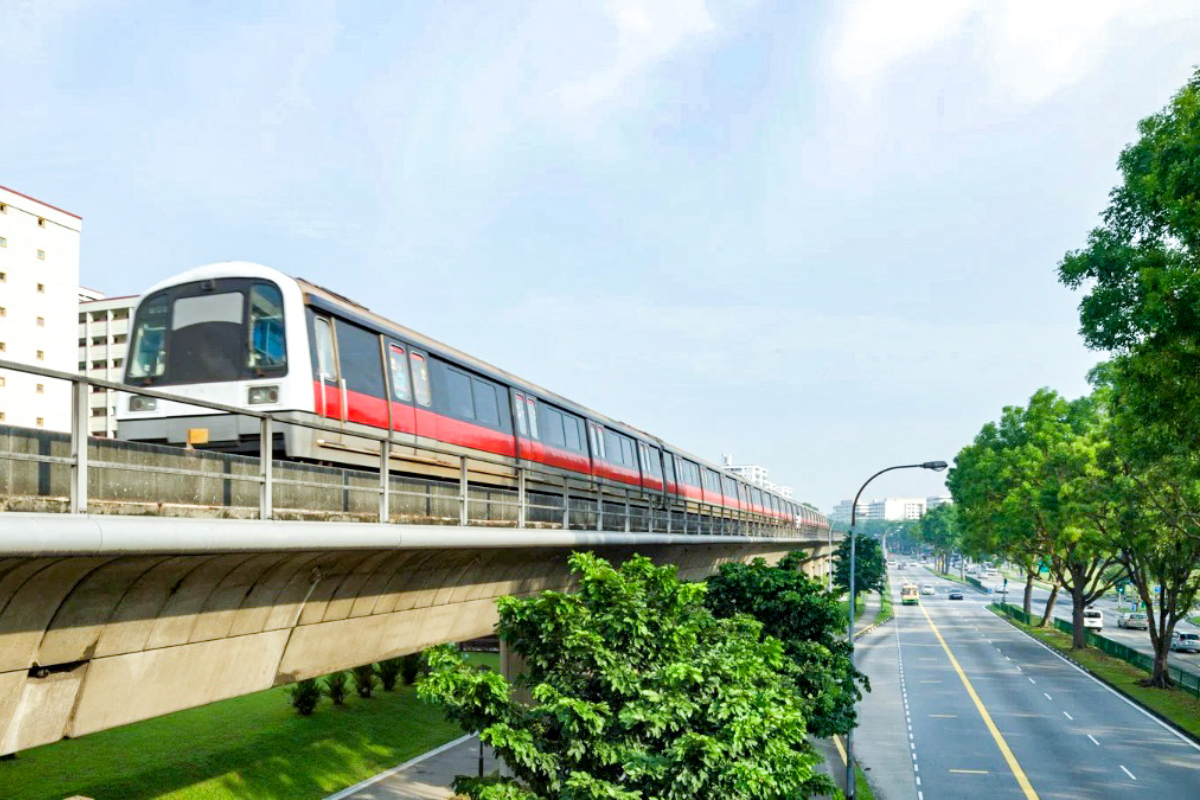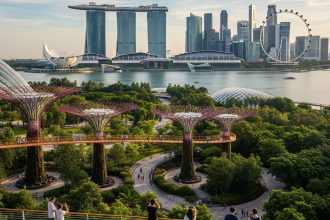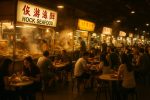Getting around Singapore efficiently matters to anyone visiting or working in the city, and the MRT system in Singapore offers one of the fastest and most reliable ways to do so. Whether you are a social media creator capturing iconic cityscapes, a business traveler rushing between meetings, or a first-time visitor eager to see every landmark, knowing how to navigate the MRT can save time, reduce stress, and make your experience far more enjoyable.
For content creators, understanding the MRT allows planning trips to popular spots, including the best rooftop bars in Singapore, without worrying about delays. Social media enthusiasts can move between neighborhoods quickly, capturing the city’s vibrant energy. Business travelers benefit from a predictable schedule that keeps them on time, while casual tourists enjoy smooth rides, seamless transfers, and easy access to attractions across the island.
What You’ll Gain from This Guide
This article will help you understand the essentials of Singapore’s MRT system. You will learn how to plan your journey, buy tickets, navigate stations, ride the trains safely, and avoid common mistakes. Following these tips ensures smooth trips, saves time, and keeps your travel budget in check. Here’s a brief look at the main points:
- How to read the MRT map and plan trips effectively.
- Different ticket and payment options for locals and tourists.
- Station navigation tips, including fare gates and signage.
- Onboard etiquette, safety, and accessibility features.
- Common mistakes to avoid for a stress-free ride.
With this guide, you can confidently use the MRT system in Singapore, whether you are exploring for a day or commuting regularly.
Understanding the MRT System in Singapore
Singapore’s MRT system has grown into a backbone of the city’s public transportation network. It began in the late 1980s and now covers more than 200 kilometers with multiple lines, connecting key neighborhoods and attractions. Trains run frequently, usually every few minutes during peak hours, making the system highly reliable.
The MRT works alongside buses and the Light Rail Transit (LRT), allowing seamless travel between different parts of the city. For example, travelers can take a bus from Changi Airport to the nearest MRT station and continue their journey downtown without hassle. This integration makes the MRT system in Singapore not only convenient but also time-saving for anyone exploring the city.
Planning Your MRT Journey in Singapore
Before boarding, planning your route ensures that you reach your destination efficiently. Start by studying the MRT map, which shows all lines, stations, and connections. Each line has a distinct color and name, such as the East-West Line or the North-South Line, and stations often have a unique code, making it easy to identify stops.
Several apps and online tools help travelers plan their trips. Google Maps provides directions and estimated travel times. The MyTransport.SG app or the official SG MRT app gives real-time train schedules, station information, and alerts about delays. Checking travel times can help you avoid peak-hour crowds, especially if you are planning to visit multiple neighborhoods or join popular food tours in Singapore.
Buying Tickets and Using a Travel Card
Singapore’s MRT system offers flexible fare options. Visitors can purchase single-trip tickets for occasional rides, which are convenient for tourists moving between a few destinations. For longer stays or multiple trips, an EZ-Link card or Singapore Tourist Pass provides unlimited rides for a set number of days. These cards are reloadable at stations and offer discounts compared to single-trip fares.
Contactless payments using credit cards or mobile wallets are also accepted at many stations, allowing passengers to simply tap and go. Travelers should remember to check their balance before boarding. Using a travel card not only speeds up the entry process but also avoids long lines at ticket machines.
Entering and Exiting MRT Stations in Singapore
Stations are easy to navigate once you know the layout. Signs at entrances display station names and lines clearly. Fare gates require passengers to tap their card or insert their ticket when entering and exiting, ensuring the correct fare is charged.
Queues form during peak hours, so standing on the correct side of escalators and moving efficiently through gates keeps the flow smooth. Station announcements guide passengers toward train platforms, restrooms, and exits. For first-time riders, observing local commuters can be a helpful way to understand expected etiquette.
How to Use the MRT System in Singapore: Tips for a Smooth Journey
Once on the train platform, check the signboards to confirm the train direction. Lines often run both ways, so ensuring you board the correct side prevents unnecessary transfers. Trains display upcoming stations, and announcements notify passengers when stops are approaching.
Seating etiquette prioritizes seniors, pregnant individuals, and those with disabilities. Passengers should avoid occupying these seats unnecessarily. Carrying luggage or shopping bags close to your body keeps aisles clear. Onboard safety requires standing behind yellow lines on platforms and holding handrails during movement. The MRT system in Singapore maintains high standards of cleanliness, making rides comfortable and pleasant.
Accessibility and Convenience
The MRT system in Singapore caters to diverse needs. Elevators, ramps, and tactile guidance paths assist passengers with limited mobility. Many stations feature restrooms, shops, and seating areas, making travel more convenient.
For travelers, MRT stations connect directly to major attractions, including Gardens by the Bay, shopping districts, and residential areas. This connectivity allows visitors to move efficiently between places like Marina Bay Sands, Orchard Road, and Sentosa. Families and older travelers benefit from stations designed for easy access and navigation, making public transportation accessible to all.
Common Mistakes and How to Avoid Them When Using the MRT System in Singapore
Even experienced travelers can make errors when using the MRT. Forgetting to top up your travel card can delay your trip, while boarding a train in the wrong direction can lead to unnecessary transfers. Ignoring rules such as standing on the correct side of the escalator or occupying priority seating can create friction with local commuters.
Peak hours, typically from 7:30 to 9:00 in the morning and 5:30 to 7:00 in the evening, bring crowded trains. Planning travel outside these hours helps avoid discomfort. Paying attention to station signs, train announcements, and fellow passengers ensures smooth trips throughout the day.
Getting the Most Out of the MRT System in Singapore
Using the MRT offers more than just transportation. Observing station layouts, train schedules, and local behavior can make your journey efficient and stress-free. Combining the MRT with buses, walking, or cycling provides flexibility and allows access to locations not directly served by the train.
Travelers who plan carefully and follow simple rules enjoy a comfortable and reliable way to explore Singapore. Local commuters appreciate passengers who respect etiquette, which creates a positive travel environment for everyone.
Mastering the MRT System in Singapore
Mastering the MRT system in Singapore ensures stress-free travel, whether for daily commuting or sightseeing. Understanding how to plan trips, buy tickets, navigate stations, and ride trains safely allows you to make the most of this world-class network. Following practical tips for etiquette, safety, and accessibility helps you enjoy smooth and enjoyable rides every time.
The MRT system connects key locations efficiently, giving travelers the freedom to explore the city with confidence. Using this guide, you can move around Singapore without worrying about delays, lost directions, or fare issues. By following these simple steps, the MRT becomes not just a mode of transport but a reliable tool to make your Singapore experience easier and more enjoyable.









